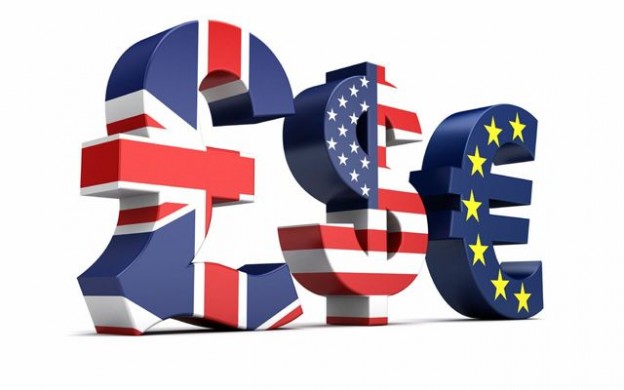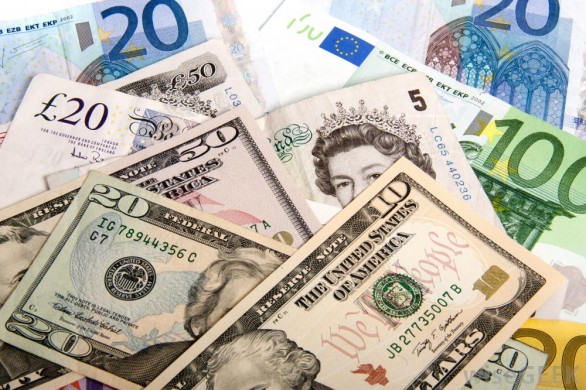Pound Sterling – the Pound had a week of ups and downs even as released economic data showed that the UK economy is on track to make a recovery. Early in the week a combination of positive construction, PMI and GDP data supported Sterling, sending it upwards against its peers.

To ask a currency expert a question direct, click HERE
Or to receive a FREE, NO OBLIGATION quote please click HERE
Sterling continued….
On Thursday however the Pound weakened against the US Dollar, coming close to its lowest-level since May. Against the Euro, Sterling was little changed. The fall was a result of a decision by the Bank of England to maintain its asset-purchasing target at £375 billion; and interest rates at a record low of 0.5%.
US Dollar
The ‘Greenback’ had a week of gains as data showed that the US economy is making a strong recovery. On Monday the Dollar strengthened to its highest-level in a month against the Japanese Yen as signs of improvement in the US economy increased speculation that the Federal Reserve will soon start scaling back its monetary easing policies. Against the Euro, ‘Cable’ hit a one-month high as investors preferred the safe haven currency.
By the end of the week ‘Cable’ rose toward its strongest level in more-than-a-month against the Yen, Euro and Pound while the Dollar Index touched a five-week high amid speculation that further improvement in the U.S. economy will prompt the Federal Reserve to curb stimulus.
The Euro
The Euro had a mixed week after the single currency region was hit by renewed concerns over the Euro crisis. Improvements were seen in the French and Italian PMI’s but Germany’s came in weaker-than-expected. Unemployment in Italy beat expectations rising to 12.2%.
Midweek the Euro weakened against the US Dollar and Sterling after unemployment continued to rise in May. The number of people out of work in the Eurozone has surpassed 26.405 million and the number of people under the age of 25 out of work exceeded 5.5 million. Joblessness in the Euro zone has been rising almost without interruption since early 2008, when the financial crisis began, declining only briefly at the beginning of 2011.
On Friday the Euro strengthened against the Pound after the Bank of England made dovish comments and maintained rates at the record low level of 0.5%. Fears over a breakdown of the Portuguese government were also allayed adding support to the Euro.
Australian Dollar
The ‘Aussie’ also saw a mixed week after it began the week weaker against the majority of its peers. It then declined against the majority of its peers due to nation’s Central Bank deciding to leave interest rates at the record low level of 2.75%. Comments made by the Bank’s Governor Glenn Stevens also weighed upon the currency. Stevens said that that the ‘Aussie’ remains too high and that he would like to see it make further declines.
Midweek the currency rebounded from its lowest-level since September 2010 on speculation that it fell too fast and as investors speculate over the likelihood of further interest rate cuts by the Central Bank. The recovery is expected to be only temporary as RBA Governor Glenn Stevens said that he wants the currency to weaken further in order to help rebalance the Australian economy.
On Friday the ‘Aussie’ extended its gains against the Pound and US Dollar as the market awaits the release of the latest US jobs data. Yesterday saw the currency strengthen after the European Central Bank and Bank of England indicated that it would be resuming with looser monetary policy.
New Zealand Dollar
The ‘Kiwi’ resumed its upward trend this week after it made gains against the Australian Dollar after the Reserve Bank of Australia kept its interest rates on
hold and said that further weakening of the ‘Aussie’ would rebalance the nation’s economy. Improved commodity prices also helped the currency.
On Friday it was heading for fresh weekly gains after the Central Banks of Australia, Europe and the UK all hinted that they would be continuing their monetary easing policies.
Canadian Dollar
The ‘Loonie’ saw a week of losses. On Monday it was weaker against the US Dollar due to signs that the nation’s economic recovery is trailing the United States. Talk of reducing the US Central Bank’s asset buying has made the US currency the world’s strongest currency this year at the expense of its northern neighbour.
Tuesday it was little moved as the Canadian markets were closed for a national holiday. However, the commodity driven currency dipped slightly against its British counterpart following the publication of stronger-than-expected UK manufacturing data. The next piece of key data for the Canadian currency will be released on Friday when the country’s latest jobs data is released.
On Thursday the currency jumped from a 21-month low against its US relation after the price of Crude Oil soared above $100 per barrel as data showed that US supplies of the resource were dwindling and that political chaos in Egypt could disrupt supplies from the Middle East. The commodity’s price is likely to rise further after the Egyptian army removed Mohamed Mursi from power, raising concerns that Egypt could end up in a civil conflict.
By the end of the week it had pared its losses after the Central Banks of England and Europe assured investors that interest rates will remain low in their respective economies. The currency is vulnerable however as investors await the release of the latest jobs data out of the USA and Canada. The price of Crude oil could also add to volatility after it declined following an ease in tensions in the Middle East.
Do you have a foreign currency requirement?
To ask a currency expert a question direct, click HERE
To receive a FREE, NO OBLIGATION quote please click HERE.
~~~~~~~~~~~~~~~~~~~~~~~~~~~
Any opinions expressed in this document are those of TorFX analysts. Any analysis and/or forecasts provided are aimed at helping clients understand market conditions and developing trends. Clients are wholly responsible for their own trading decisions.


 Hot Features
Hot Features













